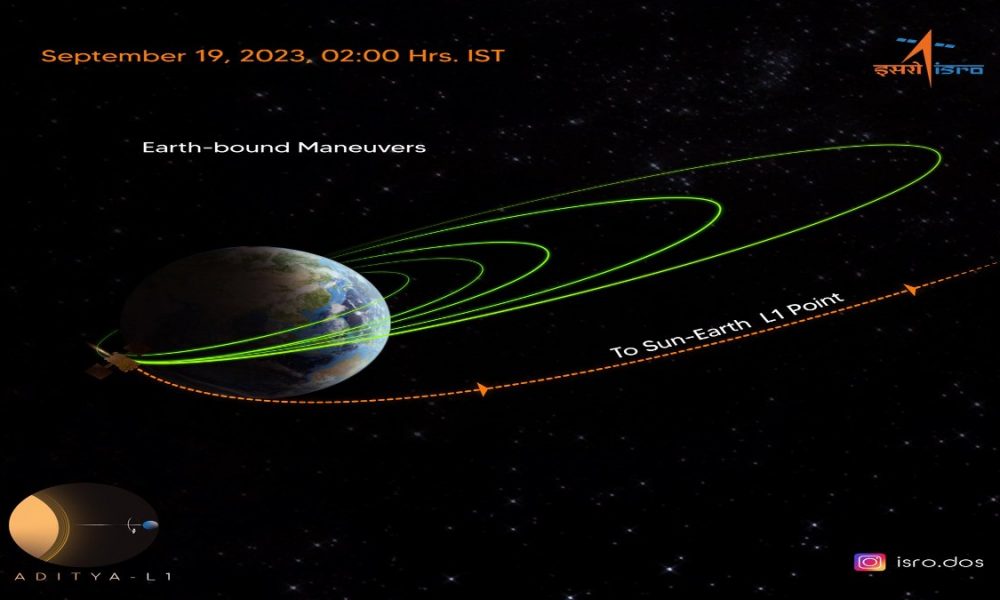
New Delhi: After circling the Earth since its launch on September 2, 2023, the Aditya-L1 spacecraft, India’s first solar mission, received a “send-off” in the early hours of Tuesday, September 19, 2023, after it performed a vital manoeuvre.
Aditya-L1 will begin its approximately 110-day route to the target near the L1 Lagrange point, a balanced gravitational region between the Earth and the Sun, with the Trans-Lagrangian Point 1 Insertion manoeuvre.
Taking their official Twitter handle ISRO wrote, “Aditya-L1 Mission:
Off to Sun-Earth L1 point!
The Trans-Lagrangean Point 1 Insertion (TL1I) maneuvre is performed successfully.
The spacecraft is now on a trajectory that will take it to the Sun-Earth L1 point. It will be injected into an orbit around L1 through a maneuver after about 110 days.
This is the fifth consecutive time ISRO has successfully transferred an object on a trajectory toward another celestial body or location in space.”
Aditya-L1 Mission:
Off to Sun-Earth L1 point!The Trans-Lagrangean Point 1 Insertion (TL1I) maneuvre is performed successfully.
The spacecraft is now on a trajectory that will take it to the Sun-Earth L1 point. It will be injected into an orbit around L1 through a maneuver… pic.twitter.com/H7GoY0R44I
— ISRO (@isro) September 18, 2023
Since its launch, Aditya-L1 has completed four Earth-bound manoeuvres on September 3, September 10, and September 15 to obtain the required velocity for its continued voyage to L1.
According to ISRO, this is the fifth time in a row that a trajectory has been successfully transferred from one object to another celestial body or point in space.
About Aditya-L1
Aditya-L1 is the first Indian space observatory to study the Sun from a halo orbit around the first Sun-Earth Lagrangian point (L1), 1.5 million km from Earth – around 1% of the Earth-Sun distance. Aditya-L1 will explore the Sun’s outer atmosphere without getting closer.
ISRO has previously said that Aditya-L1 will take around 127 days to reach the L1 point in its planned orbit following launch.
ISRO and national research labs, such as the Indian Institute of Astrophysics (IIA) in Bengaluru and the Inter-University Centre for Astronomy and Astrophysics (IUCAA) in Pune, designed the seven scientific payloads aboard Aditya-L1.
The electromagnetic, particle, and magnetic field detectors will be used to study the photosphere, chromosphere, and corona of the sun.




